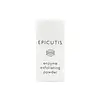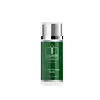What's inside
What's inside
 Key Ingredients
Key Ingredients

 Benefits
Benefits

 Concerns
Concerns

 Ingredients Side-by-side
Ingredients Side-by-side

Zea Mays Starch
AbsorbentSodium Cocoyl Glutamate
CleansingSodium Bicarbonate
AbrasiveKaolin
AbrasiveDistarch Phosphate
AbsorbentMaltodextrin
AbsorbentCI 77891
Cosmetic ColorantParfum
MaskingAllantoin
Skin ConditioningXanthan Gum
EmulsifyingSilica
AbrasiveNiacinamide
SmoothingInositol
HumectantArgania Spinosa Kernel Oil
EmollientAluminum Hydroxide
EmollientCaffeine
Skin ConditioningSubtilisin
Skin ConditioningHexyl Cinnamal
PerfumingBenzyl Salicylate
PerfumingLipase
Skin ConditioningEctoin
Skin ConditioningAscorbyl Glucoside
AntioxidantLactose
HumectantLactis Proteinum
Skin ConditioningLactic Acid
BufferingZea Mays Starch, Sodium Cocoyl Glutamate, Sodium Bicarbonate, Kaolin, Distarch Phosphate, Maltodextrin, CI 77891, Parfum, Allantoin, Xanthan Gum, Silica, Niacinamide, Inositol, Argania Spinosa Kernel Oil, Aluminum Hydroxide, Caffeine, Subtilisin, Hexyl Cinnamal, Benzyl Salicylate, Lipase, Ectoin, Ascorbyl Glucoside, Lactose, Lactis Proteinum, Lactic Acid
Ingredients Explained
These ingredients are found in both products.
Ingredients higher up in an ingredient list are typically present in a larger amount.
We don't have a description for Lipase yet.
Silica, also known as silicon dioxide, is a naturally occurring mineral. It is used as a fine, spherical, and porous powder in cosmetics.
Though it has exfoliant properties, the function of silica varies depending on the product.
The unique structure of silica enhances the spreadability and adds smoothness, making it a great texture enhancer.
It is also used as an active carrier, emulsifier, and mattifier due to its ability to absorb excess oil.
In some products, tiny microneedles called spicules are made from silica or hydrolyzed sponge. When you rub them in, they lightly polish away dead skin layers and enhance the penetration of active ingredients.
Learn more about Silica